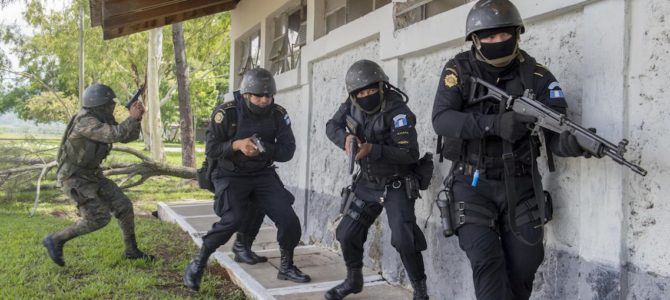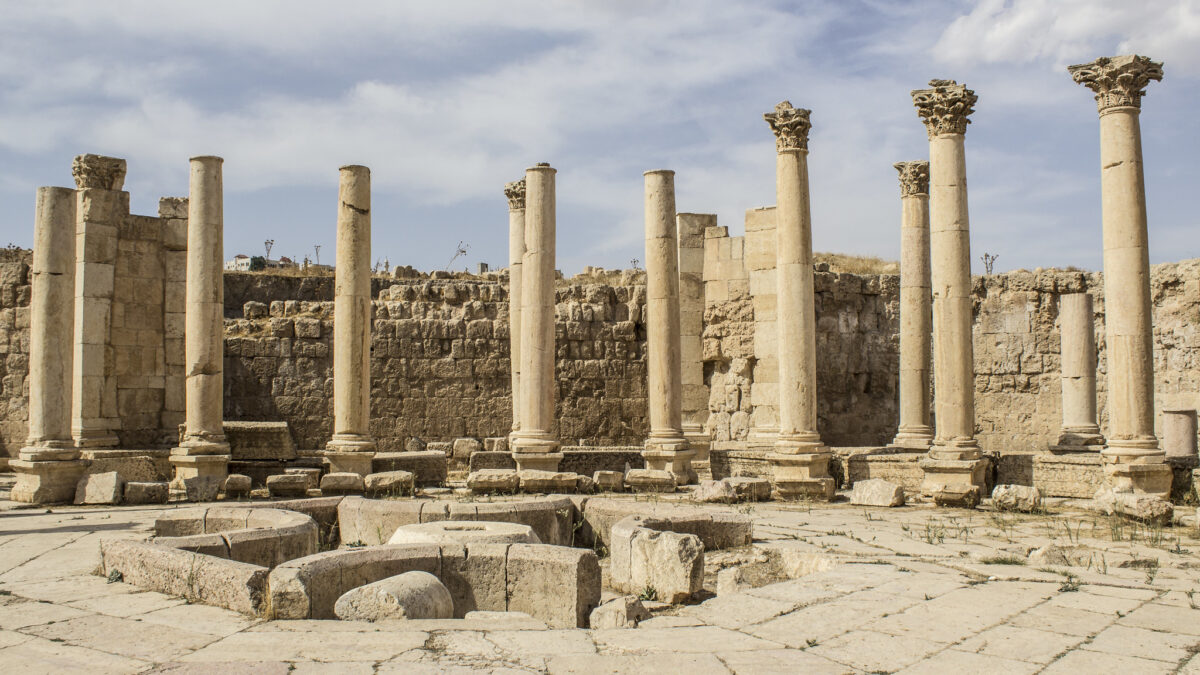
In the debate over President Trump’s “zero tolerance” policy on illegal immigration, pundits and politicians from across the political spectrum are offering simplistic solutions to the problems along our southern border.
On the Left, outrage over family separation has morphed into outrage over family detention with Trump’s announcement last week that families would be kept together but still prosecuted for illegal entry. Although they won’t come right out and say it, most liberals would like to return to a policy of catch and release, in which families caught crossing illegally are assigned a court date and released into the country.
On the Right, many seem to think it’s possible to solve illegal immigration simply by building a wall, or carrying out mass extrajudicial deportations, or separating parents and children as a deterrent.
Libertarians, too, are grasping for simple solutions. Over at Reason, J.D. Tuccille suggests that “better smugglers” are the best way to fight Trump’s draconian border policy. “Immigrants and their supporters should give some thought, and effort, to improved smuggling channels that treat migrants better than the existing criminal networks, and offer them a better chance of success,” writes Tuccille. He doesn’t mention the possibility that these new smugglers might find themselves at odds with the old smugglers, whose profits are at stake, or that jumping into Mexico’s migrant smuggling trade as a freelancer carries the risk of, say, being beheaded by one of the cartels.
Tuccille’s facile take is emblematic of the way the media has more or less ignored the role that “criminal networks” are playing in all of this—a role that makes easy solutions impossible. Throughout the border crisis, the media’s attention has been focused on the plight of Central American families and the chaos created by Trump’s zero-tolerance policy. Sure, the president likes to exaggerate how many MS-13 gang members are crossing the border, but neither Trump nor his detractors are thinking seriously about the escalating violence and accelerating social collapse now underway in Mexico and Central America, and how crime syndicates are playing into illegal immigration along the southern border.
Violence In Mexico Is Out Of Control—And Getting Worse
National elections in Mexico are set for July 1, and so far 121 political candidates, most of them running for local office, have been assassinated, along with dozens of their family members. Hundreds more have been attacked. On Thursday, a mayoral candidate in Ocampo, in the western state of Michoacan, was killed outside his residence—the third politician to be killed in Michoacan in just over a week. Federal police responded by arresting the entire town’s 27-officer police force on suspicion of involvement with the murder, another reminder that across Mexico drug cartels have infiltrated local and state police forces, political machines, and major industries. Candidates who speak out against corruption and vow to stand up to the cartels are especially in danger.
The violence is bad enough that the U.S. State Department has issued “do not travel” advisories for five Mexican states—Colima, Guerrero, Michoacan, Sinaloa, and Tamaulipas, whose northern boundary runs along the U.S. border from Brownsville to Laredo, Texas. These are the same travel advisories in place for countries like Libya, Syria, and North Korea. For much of the rest of Mexico, including nearly the entire U.S.-Mexico border, the State Department advises Americans to “reconsider travel.”
Tamaulipas is so dangerous right now that the interim governor of Nuevo Laredo, which sits directly across the Rio Grande from Laredo, has warned his citizens not to try to travel to the United States through Tamaulipas, and especially not through the town of Reynosa, across the river from McAllen, Texas. The official warning came a day after gunmen believed to be associated with the Gulf Cartel ambushed marines with the Mexican Navy three times in Nuevo Laredo, killing one and injuring 12 others. According to Mexican officials, the gunmen wore marine uniforms and drove vehicles with government markings. The ambushes only stopped when the marines called in a helicopter gunship for support.
Part of what’s driving the violence in northern Mexico is the breakdown of the Gulf and Los Zetas cartels. The most recent wave of violence began last April when Mexican authorities in Reynosa killed Juan Manuel Loisa Salinas, the leader of the Gulf Cartel. His death created a power vacuum, and various factions are now competing for a piece of the cross-border drug trade and other criminal enterprises.
Signs of the grisly cartel violence that was associated with Juárez back in 2010—severed heads, bodies hanging from highway overpasses—are now cropping up in border towns further east along the Rio Grande. In March, cartel gunmen dumped bags filled with dismembered body parts outside a gas station in Reynosa, where more than 500 people have been killed in the past 12 months.
Cartel violence is getting worse all over Mexico, not just along the border. Last year brought a record 28,710 homicides nationwide, and this year is on track to surpass 30,000. May was the deadliest month ever recorded in Mexico since the government began releasing homicide data in 1998—2,890 people were killed, an average of four people per hour. By comparison, only Syria is more violent.
The Migrant Crisis Benefits The Cartels
Into this maelstrom have come a relentless stream of refugees and migrants from Central America, driven by worsening gang violence and poverty in the “Northern Triangle” of Honduras, El Salvador, and Guatemala. Most of those crossing Mexico’s southern border are headed for safety and better prospects in the United States, which puts them at the mercy of Mexican cartels that have developed diverse income streams, from child organ trafficking to migrant smuggling.
In an interview with the Daily Beast last year, Eric Olson, deputy director for Latin America at the Wilson Center, explained that “Over the last several years more sophisticated criminal organizations have begun to take control of the migratory schemes,” citing growing competition among cartels “for control of routes and people coming through.”
Migrant smuggling has become a lucrative business for the cartels, which charge migrants anywhere from $3,000 to $10,000 a head for passage over the Rio Grande. Homeland Security Secretary Kirstjen Nielsen told a Senate Committee last month that human smuggling brings Mexican cartels more than $500 million a year, but that figure is almost certainly too low. The fact is, the cartels began to professionalize human smuggling around 2010, when large numbers of Central American migrants began coming through what had long been drug smuggling routes. In response, the cartels created a system of fees for migrants and dedicated personnel to police the routes.
The effect of tougher immigration enforcement like Trump’s “zero tolerance” policy is that the coyotes, as the smugglers are called, increase their fees while often misleading migrants about what they can expect once they cross into the United States, promising them visas or some form of amnesty. The coyotes are notorious for abandoning migrants on either side of the Rio Grande once they get paid, or, for those who run out of money, raping or kidnapping helpless customers, some of whom are sold into human trafficking near the border.
Because migrants must often pay for each leg of their journey up from Central America, including bribes for various law enforcement officials along the way, by the time they reach the U.S.-Mexico border they’re often out of money and completely at smugglers’ mercy. Migrants who can’t pay are sometimes forced to carry large packs of drugs over as payment for their fare.
Ironically, the tougher immigration enforcement is on the U.S. side, the greater the potential profits from migrant smuggling—not just because coyotes charge more but also because migrants and recently deported illegal immigrants have no other way of getting into the United States, and are willing to take greater risks. The mainstream media doesn’t seem to grasp this connection, which is why the Washington Post can publish a lengthy feature on a couple trying to illegally cross the border and barely mention the role of smugglers or the connection they have to larger criminal syndicates.
All of this is to say that we can’t have a serious conversation about the border crisis without being clear-eyed about the role the cartels play in societies that are essentially collapsing. Pretending that illegal immigration isn’t really a problem, as liberals and libertarians tend to do, ignores the close connection between human smuggling, drug trafficking, and cartel violence on both sides of the border. Pretending that it’s an easily solvable problem, as conservatives tend to do, is like claiming there’s an easy way to defeat Islamic radicalism—as if the cartels will agree to stop smuggling and trafficking just because we put up some more border fencing or ramp up deportations.
But until we get real about the almost unimaginable levels of violence and corruption in Mexico and Central America, our immigration crisis will fester, and eventually the chaos south of the border will spill over onto our side—no matter how high Trump builds his wall.









